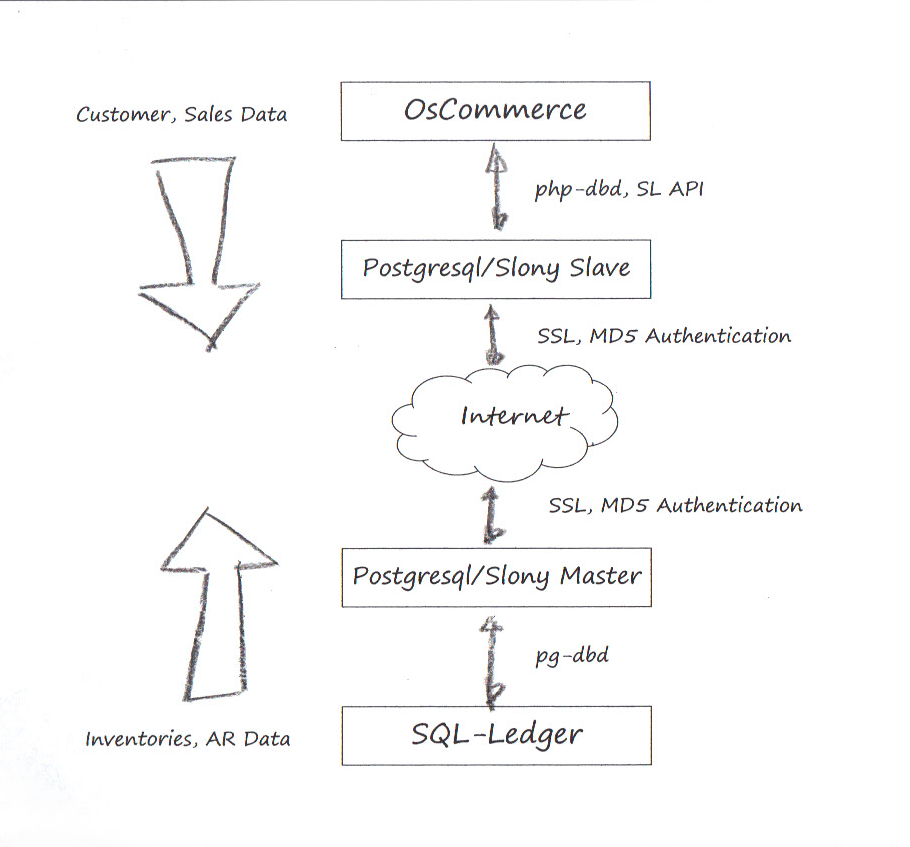RETS-Laravel
An App that Connects to MLS Data using Real Estate Transacion Standards (RETS)
Available here on Github.

SQL-Ledger offers a nice inventory control module (a.k.a. Goods & Services) that provides inventory count, and making its data available to our online store allows real-time inventories and more. For our servers that are at different locations, this could be done by querying the SL server in real time, but a lost of communications could disable our production system in this synchronous setup. So we use Slony-I to replicate data.
Whenever you have to move customers from one platform to another, a goal is always to reducing the amount of disruptions to the customers’ experience. With that in mind, it was pleasant to learn that I was able to move a customer’s password from OSCommerce to WP’s Woocommerce. It was a good deal that they both use the same password hashing framework, and it was as simple as running a test on a known hashed password between the two platforms. Now, onto moving the customers’ data, I think stored procedure may be a good way to go so stay tune…
Tracking the number of times a product is viewed is a great feature for any shopping cart to have. osCommerce has that feature. Having known that and having studied calculus so I thought it may be a good idea to also collect the time series data of the rate of change of a product being viewed. Well, that went on for almost 10 years (didn’t I say time-series data?). One day (life of a business owner first and geek second), so I thought there should be enough data to do some trend analysis and to see if it would be possible to identify a signal to purchase conversion. You know, something is not right when I was doing a sanity check on the aggregated numbers, and they are not tracking my Google Analytic numbers.
Guess what?!
This member approval plugin was put together for a B2B osCommerce site. The main feature was to be able let the site administrator to validate and approval every newly sign-up account prior to it having full access to competition sensitive information such as price and inventory. The front-end is fully responsive, and it has an upload page to allow a new account to submit the necessary registration documentation such as reseller permit, business license, picture of a store front, and etc. to verify its B2B status. One minor admin core file change required.
Ok, I am a big fan of WordPress’s plugins more than osCommerce’s addons. So it is natural that I would look for a WordPress slider to use in osCommerce before installing one of osCommerce’s addons. Well, that’s because I had done both and I tend to go with the path of less resistance. Perhaps that was the path of less resistance to me as I can code a little so it was easier to hack than had to show our creative folks on how to create or update a nifty animated slide. Here I am going to show you how I had hacked Smart Slider 2 for WordPress into an OSC demo store that I am creating. I am also going to assume that you had integrated WordPress into OSC. I must say the result had turned out great. There was definitely a learning curve on figuring out how to use the slider’s admin inteface, but once that’s done you can for sure update your OSC front page with ease.

Read More
I had been integrating WordPress into osCommerce 2.2 since 2008 based on several online tutorials. It was a daunting task as there were a few files that needed to be modified and it was a maintenance nightmare whenever there’s a software upgrade. Then there were other similar integration attempts in both communities, OSC into WordPress or WordPress into OSC, and I had no clue what had became of them. Well, since the modular top and bottom templates implementation in OSC 2.3, integrating WordPress and OSC had actually gotten a lot easier; hence, the creation of this WordPress-OSC template. The idea was basically to make OSC’s modular header and footer available in a WordPress template. So let’s take this out for a spin…